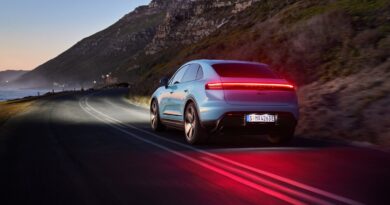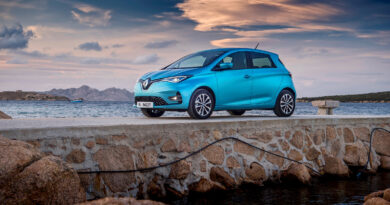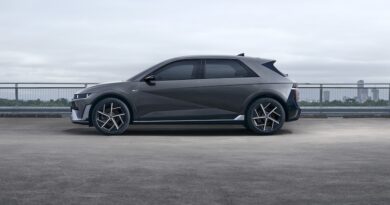Mini Strip: Fashion guru meets EV for sustainable strip tease
Fashion designer Paul Smith has embraced sustainability to create the stripped back – and very raw – Mini Strip.
The one-off design exercise started life as a Mini Cooper SE EV but has been pared back and reimagined as a car built for “simplicity, transparency, sustainability”.
Put simply, pretty much anything that didn’t need to exist for the operation of the vehicle was removed and the things that were needed were reimagined and created from sustainable or recycled materials.
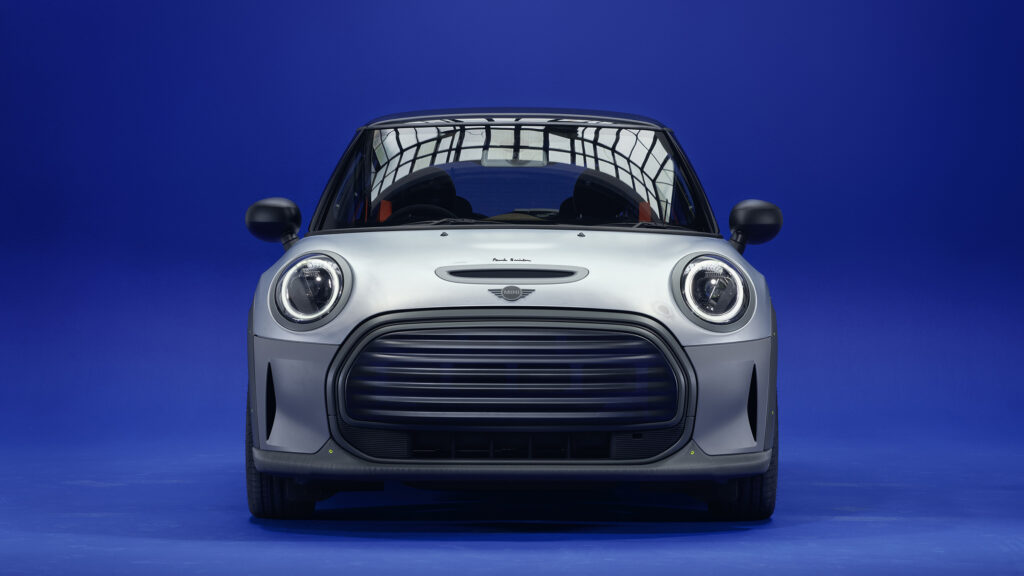
The first thing to go was paint. Look carefully and you’ll notice the exterior finish is bare metal, right down to the occasional mark where the surface has been grinded down for a smooth finish, such as near one of the headlights. There’s a protective layer to stop it rusting, but otherwise the Mini Strip is paintless.
Inside, too, there’s whole heap of trim missing, including carpet and a centre console.
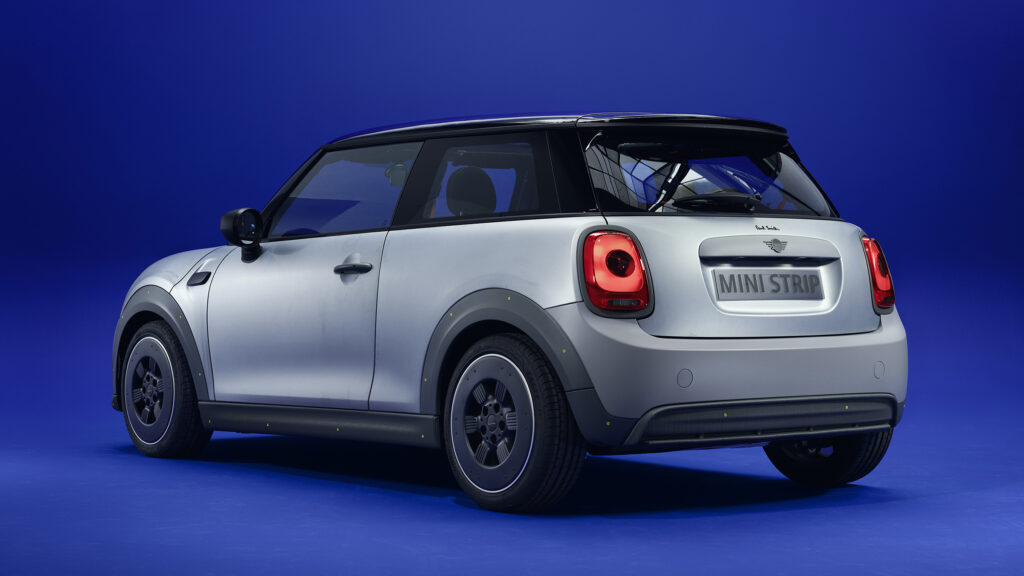
“Together I think we have created something truly unique, by going back to basics, reducing things down and stripping the car,” said Smith (pictured up top) of the Strip.
The doors also have a mesh finish that exposes the metal structure.
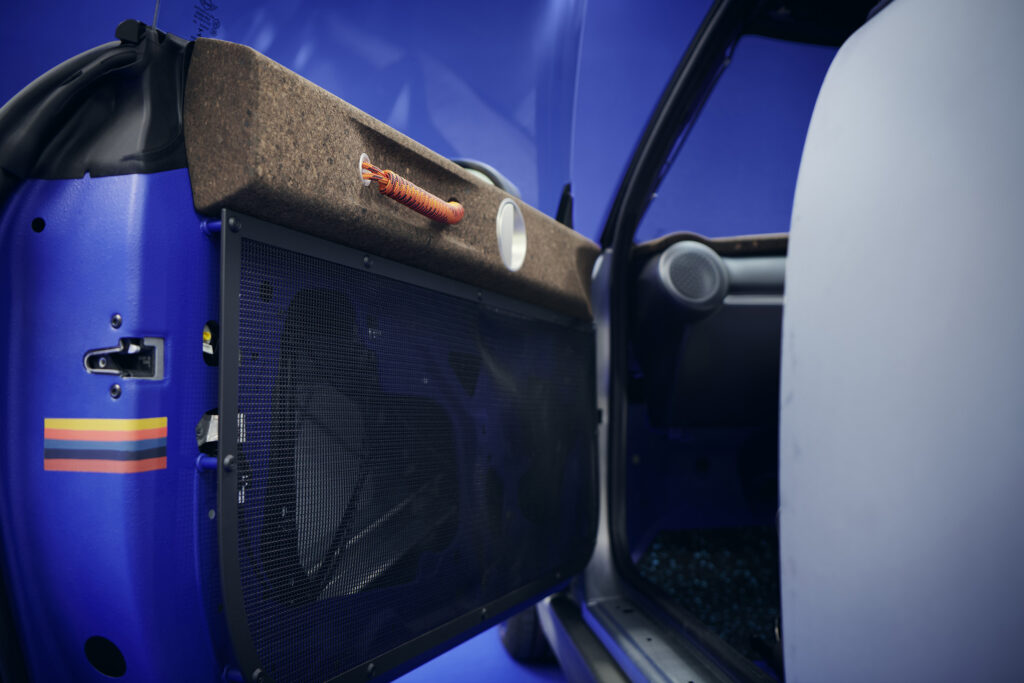
That same mesh is used to vaguely cover the airbag in the steering wheel. Meanwhile, side airbags running along each side of the car are fully exposed, ready to deploy.
The steering wheel does without leather – Mini is dropping leather across its future production models – instead using handlebar tape used on push bikes.
And there’s not a skerrick of chrome inside, either, with more modern finishes winning out.
And door handles have been replaced by orange climbing rope, with orange seatbelts to match.
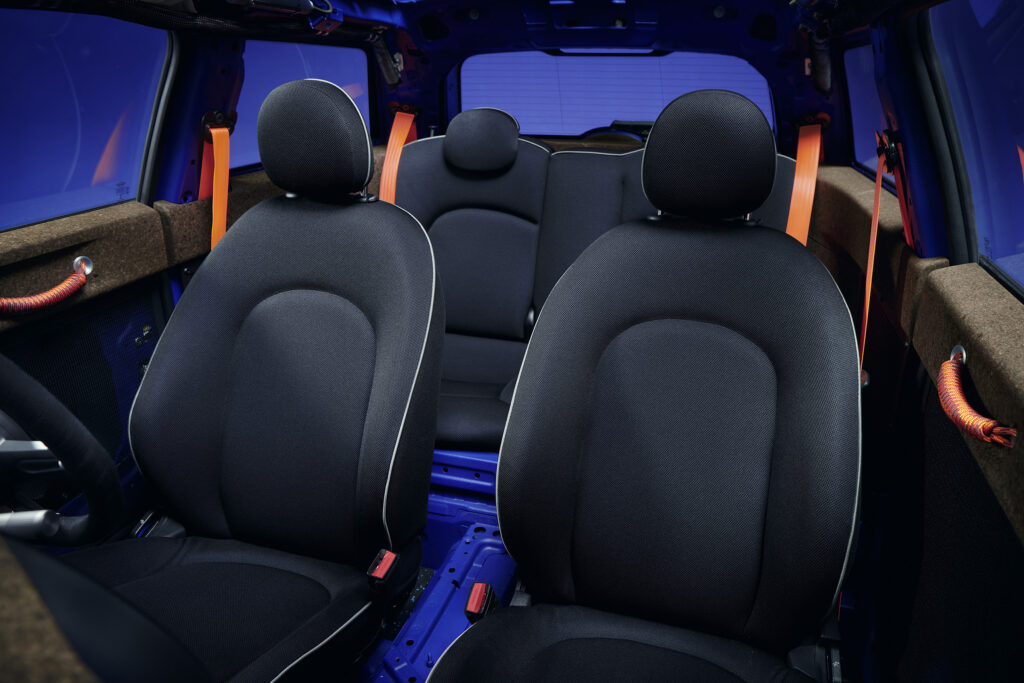
There’s no touchscreen or instrument cluster, a holder instead locating a smartphone in the centre of the car to take care of all things information and entertainment.
Instead of plastic finishes for the doors the Mini Strip uses cork, in a more overt use of the material than that in the Mazda MX-30 Electric.
BMW suggests such a material could one day make it into showrooms: “With its pleasing firmness combined with a soft feel, cork could provide a substitute for foamed plastics in future.”
The seats are trimmed in a knitted fabric that is claimed to be fully recyclable, even its piping.
And floor mats are made of recycled rubber.
Exactly how such a basic interior presentation may be welcomed by the average style-conscious Mini buyer is up for discussion, although given the intense focus on sustainability that in itself may be enough to win many over.
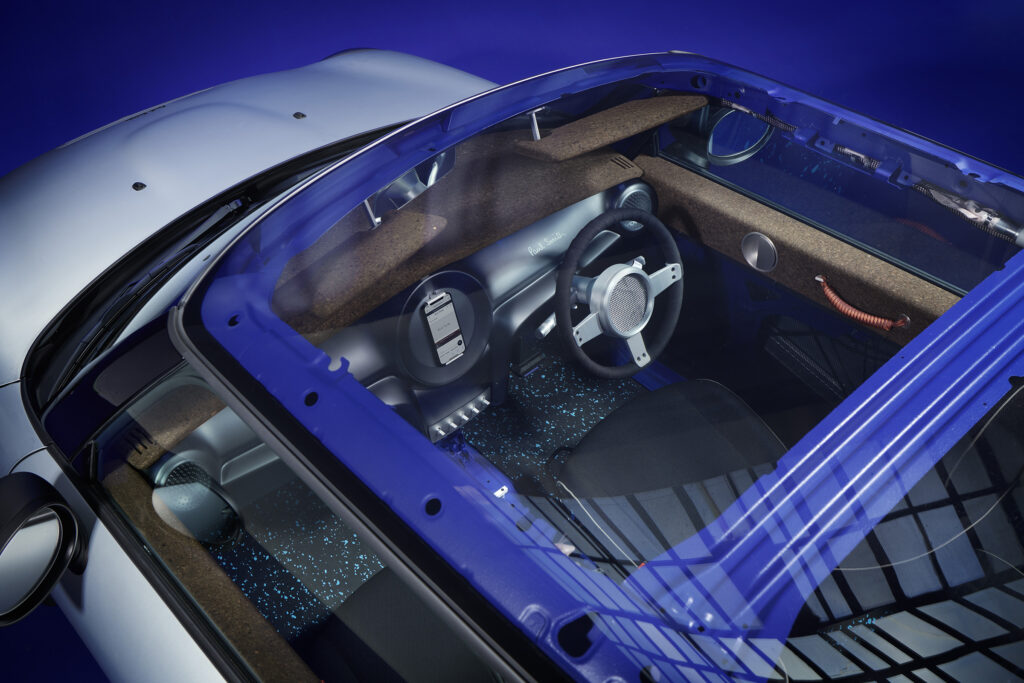
Outside, the large blanked-off grille is very different to that on the production version of the Mini Electric, instead adopting a more traditional form with horizontal bars. But it’s made from recycled Perspex to reinforce the focus on sustainability.
Similarly, the panoramic sunroof is not glass but again made of previously used Perspex. Plus it showcases the metal roof structure rather than hiding it under trim.
Like the Tesla Model 3 Standard Range Plus, the Mini Strip has stylish wheel covers – also from recycled Perspex – to reduce aerodynamic drag, in turn increasing range.
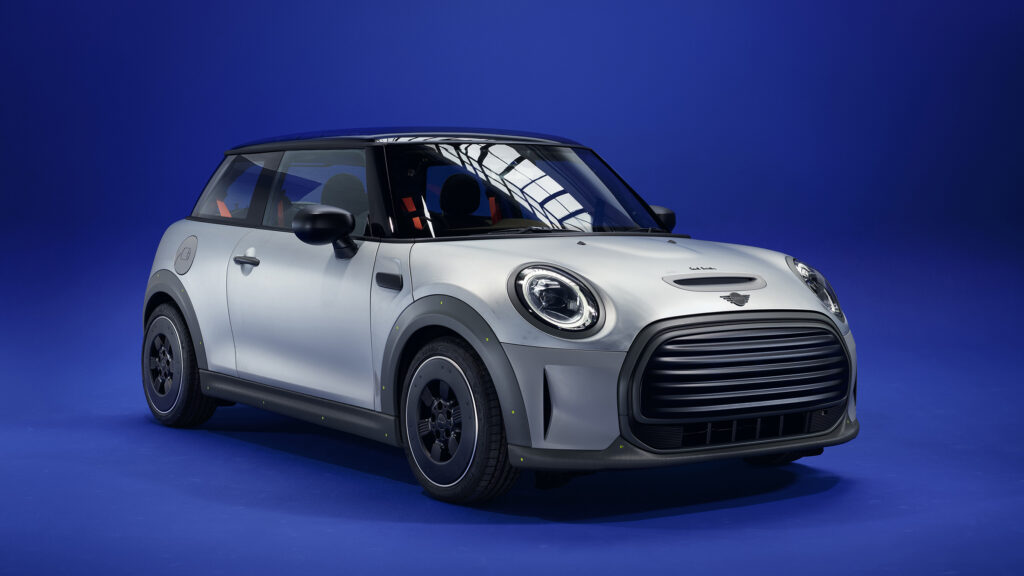
Mini hasn’t detailed the range of the Strip, although given the reduction in weight and efforts to improve aerodynamics there’s every chance it’s better than the claimed 233km on the Mini Electric.
There are some luxuries and touches added purely for fashion’s sake, such as the charging door that illuminates in neon green when opened. And while you’re looking at that charging flap, the simple power plug motif was designed by Paul Smith.

Plus the trademark Paul Smith coloured stripes make an appearance on the insides of the doors. And, of course, there’s the familiar Paul Smith signature across the dash.
All of which has created a very radical – and sustainable – Mini.
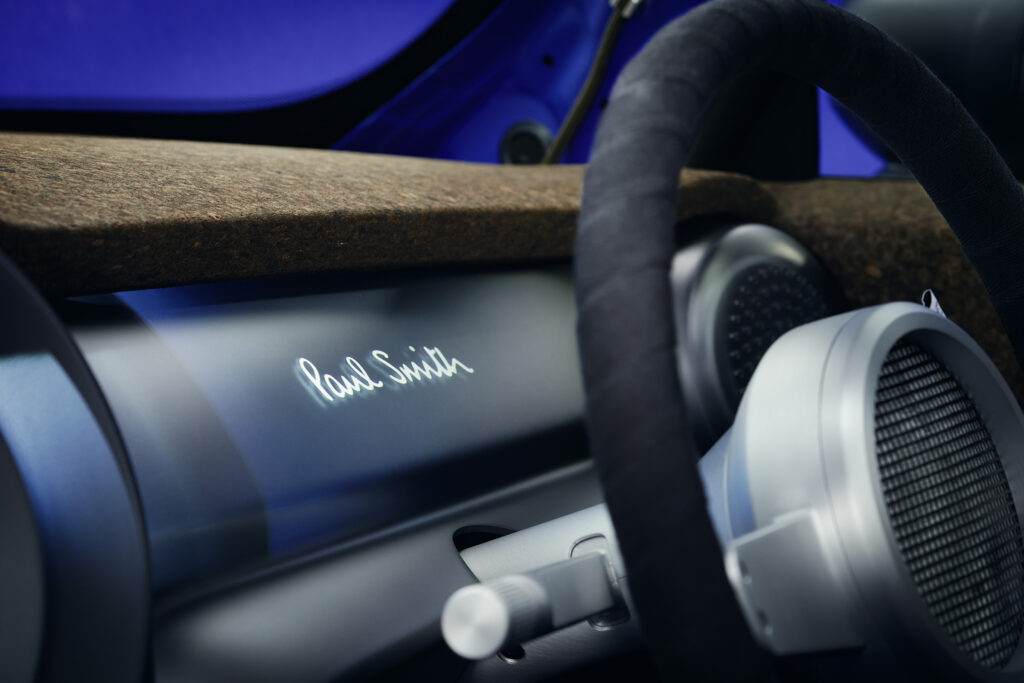
Sustainability is big business these days. Volvo is not using leather in any of its EVs and has a big push on sustainable materials while its sister brand Polestar has a focus on sustainability which includes vegan finishes. All Teslas these days are vegan while Kia is offering its upcoming EV6 witha vegan leather interior. Jaguar and Land Rover are looking at more sustainable plastics and adhesives that don’t use animal products. Even Porsche now has a leather-free interior option for its Taycan that has a price premium over leather.
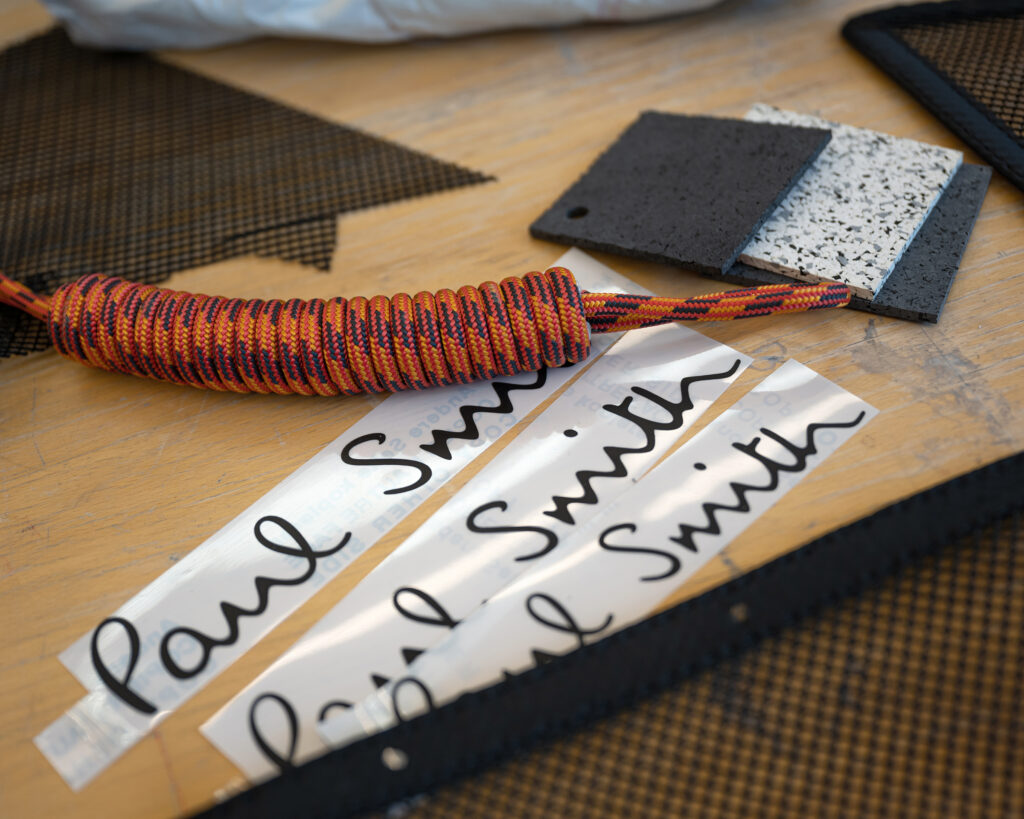
And while luxury brands such as Rolls-Royce and Bentley are a long way from ditching traditional finishes such as leather and chrome, they’re increasingly considering more sustainable materials as the buyer base becomes more environmentally aware.


